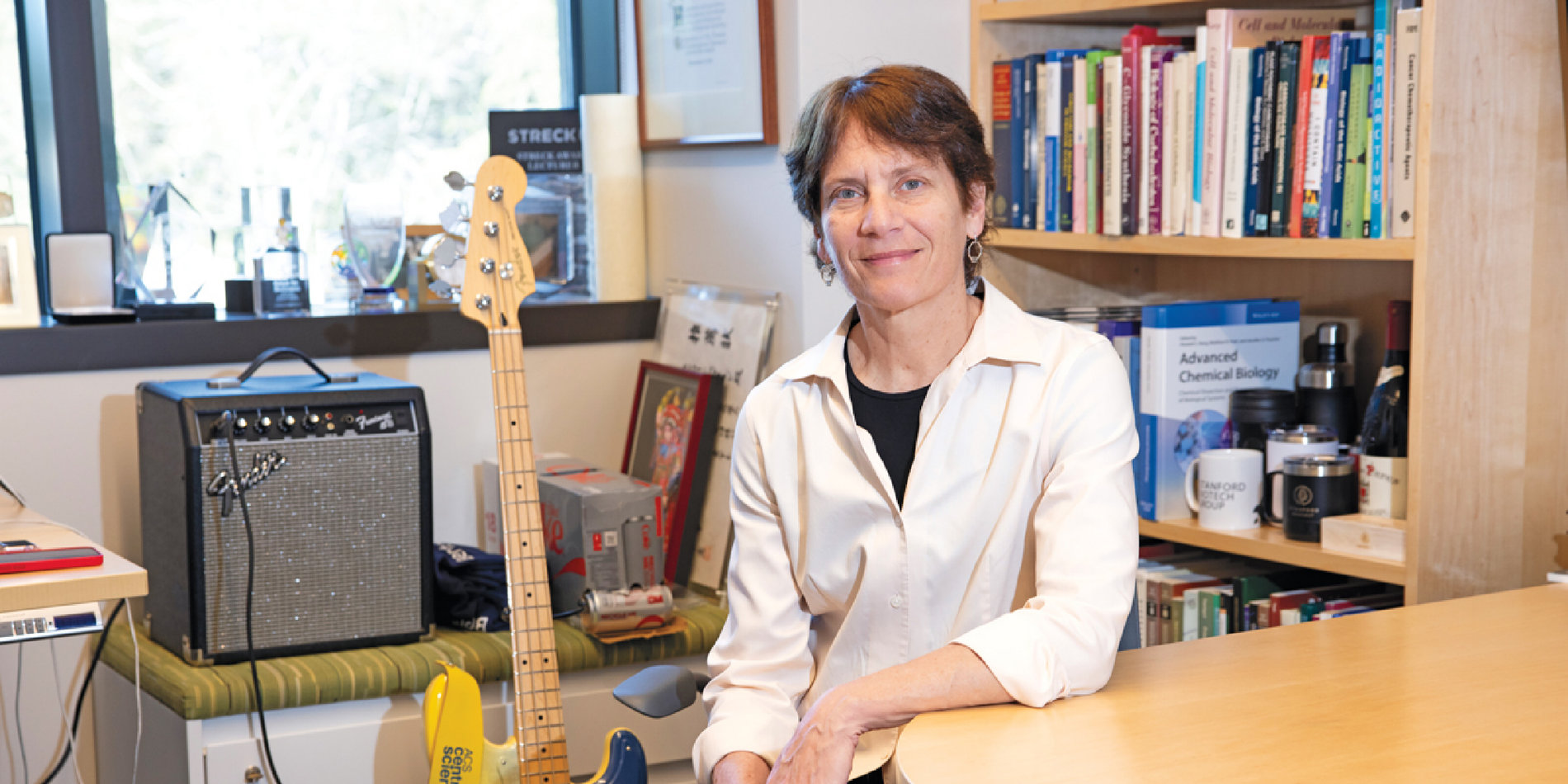ChEM-H researchers take first steps toward new cancer drug
Stanford ChEM-H researchers have for the first time revealed the structure of a key protein complex involved in the regulation of our immune systems – a discovery that could eventually pave the way for safer, more effective and more widely available drugs to treat cancer, the researchers report November 14 in Proceedings of the National Academy of Science.

The complex comprises a receptor protein that resides on the surface of immune cells together with one of its natural binding partners. The protein, known as programmed cell death protein one or PD-1, acts as a kind of switch for immune cells that allows healthy cells to turn them off and prevent being attacked. Cancer cells, however, also have the ability to flip the PD-1 switch, leading researchers to look for ways to deactivate it altogether. That effort led to the development of FDA-approved antibody drugs, which have reshaped cancer treatment, said Peter Kim, the Virginia and D.K. Ludwig Professor of Biochemistry and a ChEM-H institute scholar.
“It just ignited the field,” Kim said.
But antibody treatments are far from perfect, said Shaogeng Tang, a postdoctoral fellow in Kim’s lab and the new study’s first author. For one thing, antibodies last a long time in the blood, meaning that if a patient has an adverse reaction, they’re forced to deal with it for days or weeks before doctors can try another treatment. Second, antibodies have a hard time getting into some tissues and into the brain, limiting their use for some cancers.
Third, people get cancer all over the world, but only some regions have the resources – for instance, super-cold refrigerators – needed to keep antibody-based treatments stable. That means that low-resource countries can’t benefit from those therapies.
One solution, Tang said, is to develop a small molecule drug that could target PD-1 and do the work antibodies do. Such a drug could be taken in pill form – antibodies must be injected – and would not last as long in the blood. They could likely penetrate into more tissues, and most importantly do not require any special handling to keep them stable.
But there are a couple catches. To design a drug to target PD-1, researchers need to find some nook or cranny where a small molecule could bind to it, and PD-1 itself is fairly smooth. Inspired by studies of mouse PD-1, Tang and Kim were intrigued by a prominent pocket that forms in PD-1 when it binds a protein called PD-L2, in the process of curbing the formation of new immune cells.
Still, no one knows whether a similar pocket exists in the human version. For one thing, the amino acid sequences of the two are not that similar. For another, no one has been able to crystalize human PD-1/PD-L2, a first step toward identifying its structure. The challenge, Tang said, is that human PD-1 and PD-L2 don’t bind well to each other.
“Scientists, including us, have been trying to get the crystal structure of the human PD-1/PD-L2 complex for over 10 years, without success,” Kim said.
To solve that problem, Tang and Kim searched for PD-1 mutations that might make it bind to PD-L2 more tightly, drawing on their knowledge of mouse PD-1 for guidance. The approach was a success, and when they finally crystalized PD-1/PD-L2 and determined its structure, they found what they were looking for: a large pocket where a small molecule could fit. With that knowledge in hand, researchers can now test, through computer simulations and eventually in the lab, different small molecule drugs that could do the work of antibody treatments with fewer downsides.
The research also suggests the start of a solution to a much broader problem. “The problem that we started with is, how can we drug important protein targets that are intractable for small molecule drugs – in other words, drugging the undruggable,” Tang said. If researchers succeed in finding a small-molecule drug to target PD-1, once thought to be undruggable, suggests there is hope for other currently undruggable proteins involved in other diseases.



